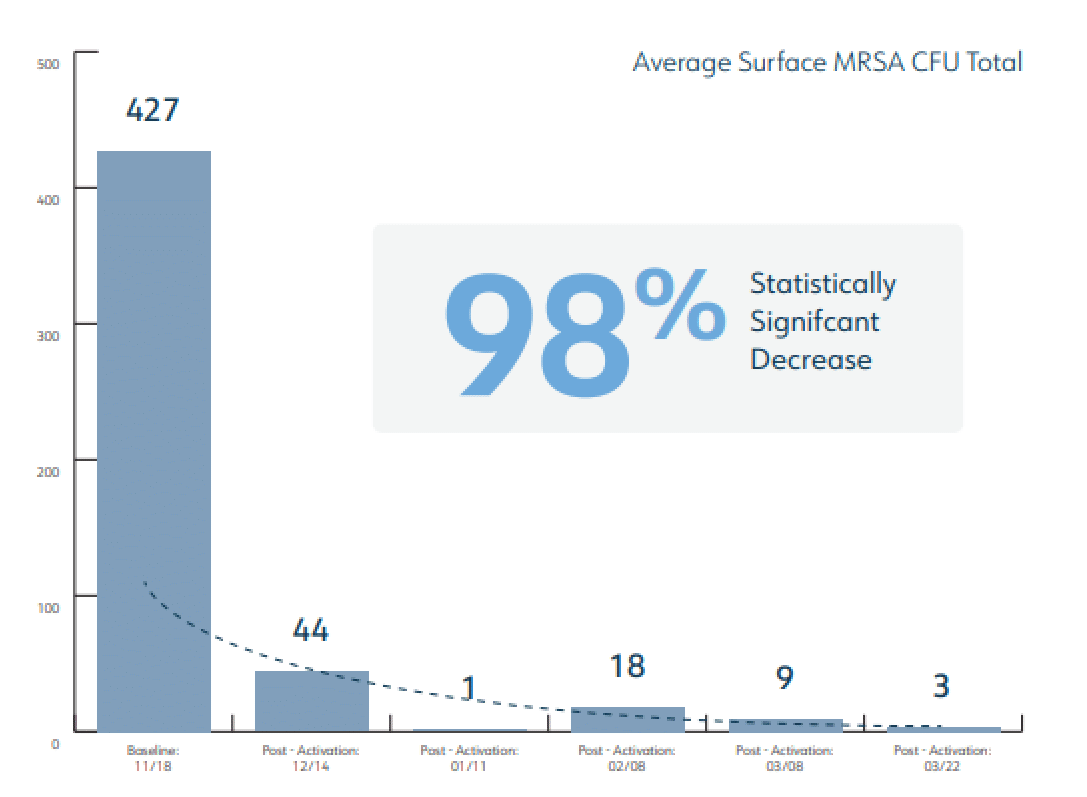Medical-Surgical ICU
Reduction of Methicillin Resistant Staphylococcus aureus Surface Microbial Burden and related Healthcare Associated Infections with the implementation of an Advanced Photocatalytic Oxidation Technology in a Medical-Surgical Intensive Care Unit.
Background
Methicillin Resistant Staphylococcus aureus (RSA) bacteria have been long established as a major cause of infections. MRSA intections occurring in blood or other sterile sites are associated with poorer heath outcomes and an increased risk ot mortality. especiall when acauired in a healthcare setting. The ongoing COVID-19 pandemic has not only stymied reduction efforts but has precipitated increases in invasive HO-MRSA infections, with increases seen of 12-34% in national MRSA standardized intection ratios in 2020 compared to 2019. The facility had seen similar increases of HO-MRSA intections defined as a positive culture on or after the 3rd hospital day, despite no change in clinical practice.
Methods
A prospective study was conducted in a 22 bed Medical-Surgica Intensive Care Unit from November 2021 to March 2022. 50 surrace samoles were collected from surfaces throughout the unit including two nurses stations, physician charting area, and 5 areas in 7 patient rooms. The advanced photocatalytic oxidation a CO equipment was then installed in the HVAC ductwork throughout the ICU and activated. Sampling was then repeated every four weeks during the study period. The facility’s normal disinfection protocols were unchanged. HO-MRSA infections attributed to the unit were also tracked during the study period. Changes in MRSA surface burden were calculated using a repeated methods ANOVA with post ho analyses as appropriate. Rates of HO-MRSA infections per 1,000 patient days were compared using the chi-square test.
Results
There was a 98% statistically signiticant decrease in MRSA surtace burden from the baseline to final post-activation test. he average colony forming unit count (CFU) went from 427 to 3 FU/100cm? during the same time. HO-MRSA infections also had a statistically significant decrease when compared to the same time frame a year prior and the immediate o months prior to the study

Conclusion
The aPCO technology resulted in a reduction of MRSA on frequently touched surfaces in a high-traffic ICU. Corresponding decreases in HO-MRSA cases were also seen. This study highlights a novel aCO technology and its efficacy at reducing microbial burden and healthcare-onset MRSA infections despite no change in practice and through the continued COVID-19 pandemic.